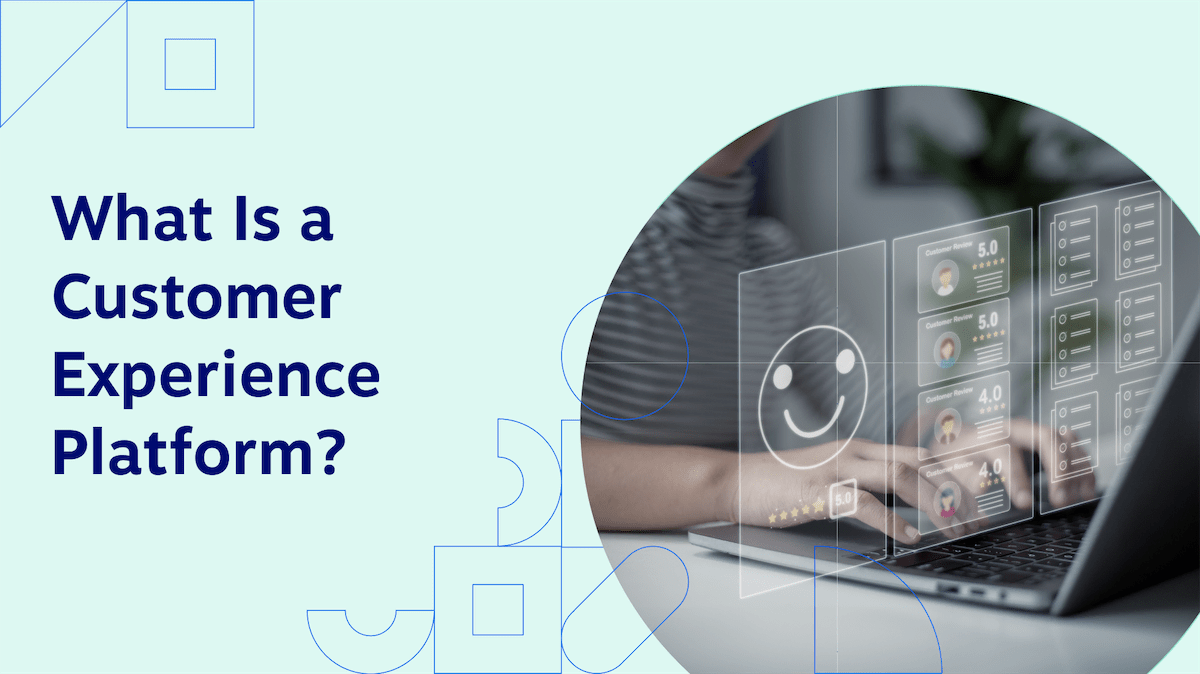Your customers’ experiences are critical to your business success. Every email, every phone call, and every website visit counts. To grow in a competitive environment where everyone is vying for customer attention, you need the right customer experience software to not only better understand your customers but also make every interaction a success.
We’ve put together this best-practice guide to give you an insider’s look at customer experience software — what it is, the essential features you need, which type is right for your business challenges, and the popular customer experience platforms to check out.
What Is Customer Experience Software?
Customer experience software is a collection of tools that help businesses manage and optimize all customer communications within a unified ecosystem, connecting all touchpoints — from sales and marketing to support and feedback.
Customer-focused experience platforms offer advanced customer service, marketing automation, and analytics tools that enable businesses to manage the customer journey from start to finish. Implementing a customer experience platform brings forth many business benefits: from delivering consistent and personalized experiences at scale to meeting customer expectations and increasing loyalty, retention, and referrals.
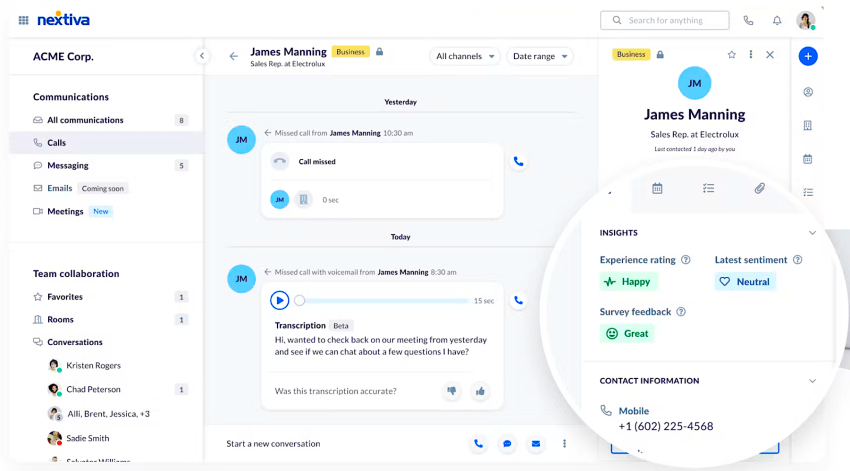
Key Features of Customer Experience Software
While customer experience platforms can vary in features, the most effective ones share a few common, powerful capabilities.
Omnichannel support
A key feature of any customer experience platform is omnichannel support, which helps businesses track all customer conversations in a unified view, rather than monitoring separate, disconnected channels. For example, if a customer sends a direct message on Instagram, then emails, and then calls your support team, your team sees everything as a single conversation. The customer never has to repeat themselves, and your agents have the full context to resolve issues quickly and efficiently.
Data analytics and insights
Effective customer experience software has built-in analytics tools that automatically analyze customer data throughout the customer journey. Automated business intelligence saves you hours of manual data analysis to make data-backed decisions. For example, if you notice that certain agents are overloaded, you can improve call routing to better distribute the workload or schedule new hires.
Personalization at scale
In Segment’s State of Personalization Survey, 56% of participants said they purchase again after a personalized customer experience. A customer experience platform that enables customer care personalization, collecting and analyzing data from various touchpoints, is a winner. With insights into customer demographics, purchase history, and browsing behavior, you can personalize marketing campaigns, product recommendations, and support interactions, and make every customer feel valued.
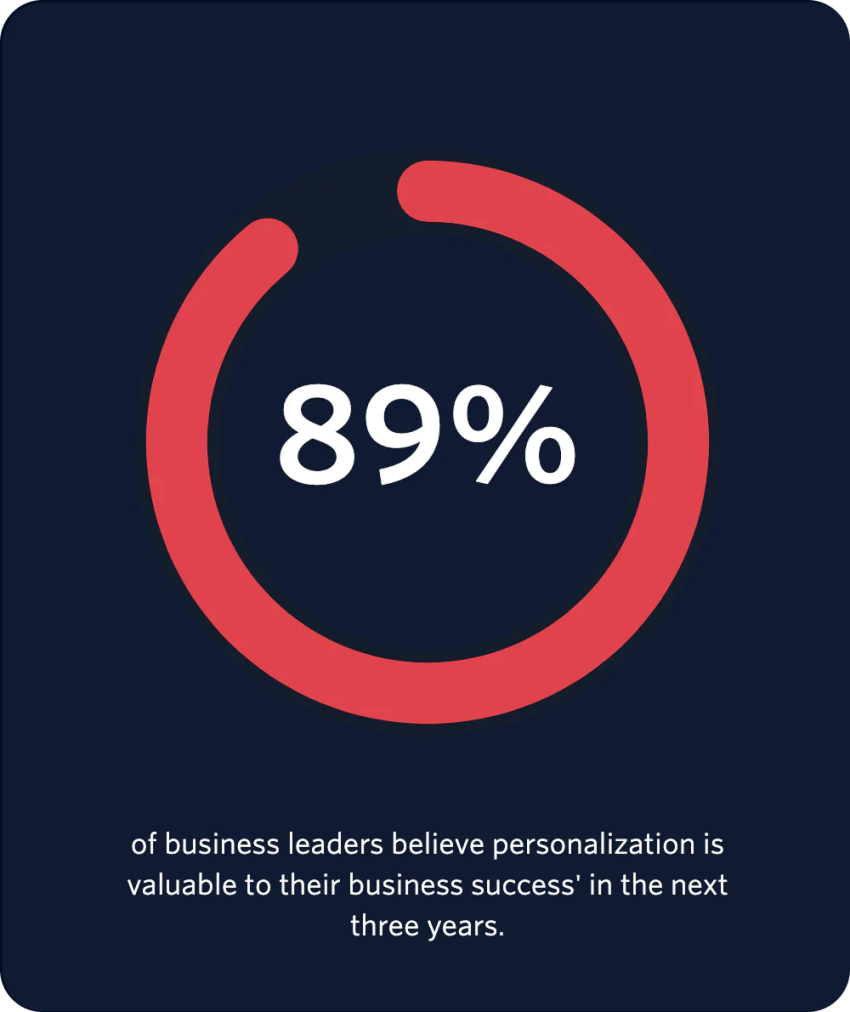
Automation and AI
Many leading customer experience platforms use automation and artificial intelligence (AI) to automate manual processes and offer real-time support. For example, AI-powered chatbots can handle common inquiries around the clock, while intelligent routing automatically routes complex issues to the right agent. This frees your team to focus on more strategic and impactful tasks.
Feedback and surveys
To improve the customer experience, you first need to measure it. Customer experience software includes built-in customer feedback tools for creating, distributing, and analyzing customer feedback surveys. Use post-interaction surveys to measure satisfaction or send net promoter score (NPS) surveys to gauge customer loyalty. This direct feedback is great for identifying improvement areas.
Customer journey mapping
A key feature of a customer experience platform is journey mapping, which lets you visualize the whole customer journey when interacting with your brand. By mapping every touchpoint — from initial perception to post-purchase support — you can identify friction points and opportunities to provide your customers with a smoother and more enjoyable experience.
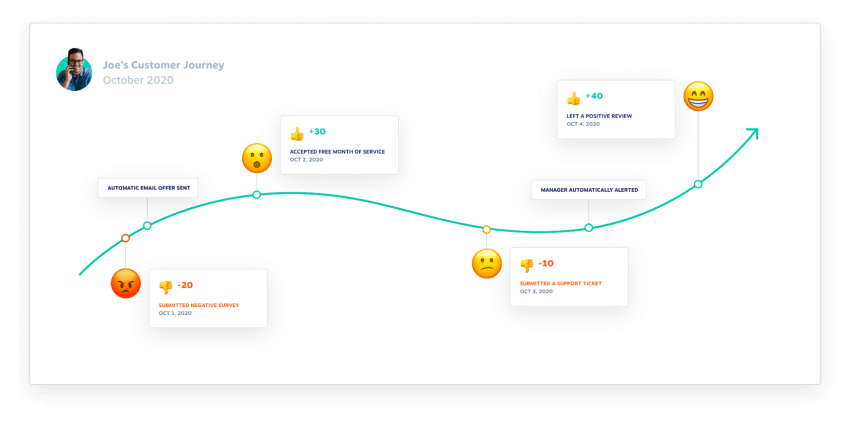
Predictive analytics
Predictive analytics goes beyond historical data and uses AI and machine learning to predict future customer behavior. You can easily identify customers at risk of churn, predict future product needs, or proactively send relevant offers to stay one step ahead of your customers’ needs.
Examples of Customer Experience Software
Customer experience software isn’t a single product but a category of tools, each solving different business challenges. Here are the main types:
1. Contact center platforms
A contact center software is the central point for all customer communications, unifying phone calls, emails, social media messages, and live chat. Key features like automatic call distribution (ACD) intelligently route incoming calls to the appropriate agent, while interactive voice response (IVR) systems enable callers to self-service. These platforms also offer tools for real-time agent monitoring and omnichannel routing, ensuring seamless communication regardless of how the customer initiates contact.
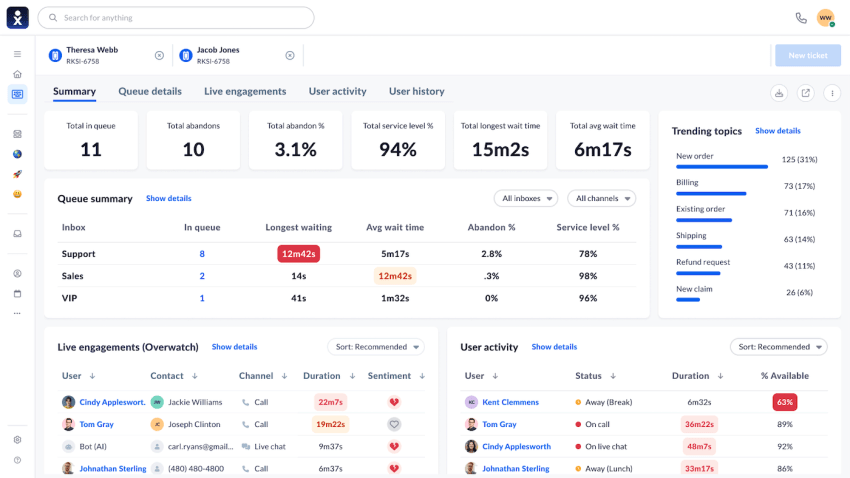
2. Customer relationship management (CRM) systems
CRM platforms are your single source of truth for all customer data. It’s where you store contact information, log interactions, and track prospects as they move through the sales funnel. Features like marketing automation and lead management tools allow you to nurture leads with targeted campaigns and power through key sales activities.
3. Helpdesk and support platforms
A helpdesk platform streamlines your customer support processes end-to-end. These customer experience management platforms are great for efficiently managing and resolving customer issues using features like ticketing systems that organize each customer request into a trackable ticket. They also enable customers to find answers on their own through self-service portals and knowledge bases, reducing your support staff’s workload.

4. Customer feedback and survey tools
Customer survey tools collect, manage, and analyze customer feedback. They allow you to capture your customers’ opinions using different survey types at different stages of their customer journey. Features for distributing surveys across multiple channels, response management, and detailed feedback analytics turn customer opinions into key business insights.
5. Marketing automation platforms
A marketing automation platform handles recurring marketing tasks, so your team can focus on strategy. These customer experience tools help create highly personalized campaigns tailored to customer data and behavior. Core features include A/B testing to optimize messaging and behavior-based triggers that launch automated campaigns based on customer actions, such as website visits or abandoned carts.
6. Digital experience platforms (DXP)
A digital experience platform has a set of tools for creating and managing experiences across all digital channels, including websites and mobile apps. These features include robust content management systems for publishing digital content, customer data management tools, and digital asset management for easily organizing and delivering images and videos for a consistent brand presence.
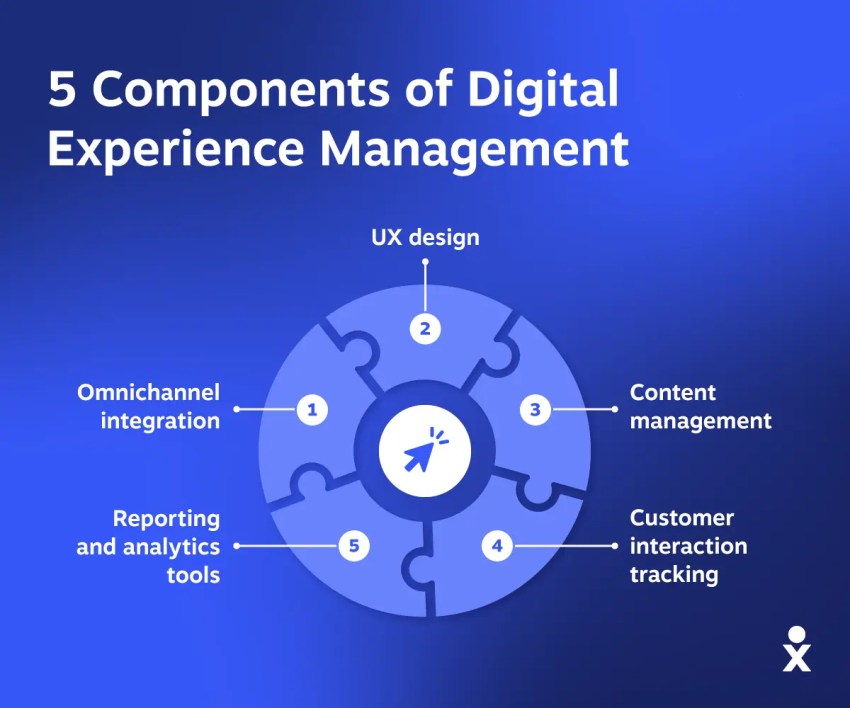
7. E-commerce platforms
An e-commerce platform lays the necessary infrastructure for selling products and services online. Besides a product catalog and a checkout page, e-commerce software offers advanced features such as data analytics to track customer behavior and provide personalized recommendations. Customer support tools such as live chat and help desks are often integrated directly into the online shopping experience.
5 Best Customer Experience Software in 2025
Let’s look at some of the top customer experience software products and providers you can choose from:
1. Nextiva
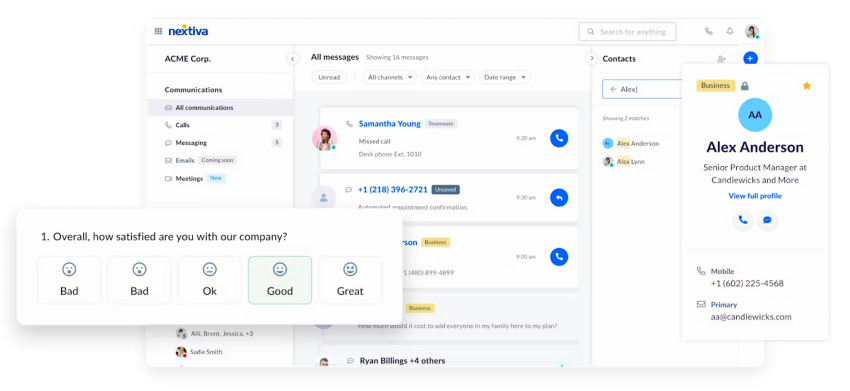
Nextiva is a unified customer experience management (UCXM) platform that solves the problem of fragmented conversations. It brings together a business’s phone system, contact center, and team collaboration into a single, intelligent workspace, providing a complete view of the customer.
Key Nextiva features:
- Omnichannel contact center: Unifies voice, email, SMS, web chat, and social media on a single agent desktop, allowing conversations to seamlessly transition between channels.
- Intelligent call routing: Use automatic call distribution and customizable interactive voice response systems to quickly connect customers to the right agent or department.
- Call and screen popups: Automatically displays customer information and history on an agent’s screen as soon as a call comes in, providing instant context.
- Advanced analytics and wallboards: Has real-time dashboards and historical reports on key metrics such as call volume, wait times, and agent performance to drive operational improvements.
- AI-powered automation: Uses AI for automated post-call summaries, sentiment analysis to capture customer emotion, and intelligent workflows to reduce manual tasks.
- Integrated team collaboration: Includes integrated team chat, video conferencing, and file sharing, connecting front-end teams with back-office experts to resolve complex issues faster.
Pricing: The entry-level Nextiva plan starts at $15/user/month, making it one of the most affordable customer experience software out there. You can also go for other higher plans like Engage at $25 and Power Suite CX at $75, as per your budget and customer experience needs.
Pros: HD voice quality and reliability, a complete unified platform for all communications, deep customer insights through unified analytics, and improved agent productivity with a single workspace.
Cons: The feature set might be overwhelming for very small teams or solo entrepreneurs who only need basic phone service.
Best for: Communication-intensive businesses looking to improve both customer satisfaction and operational efficiency by unifying their contact center, phone system, and internal collaboration.
2. HubSpot
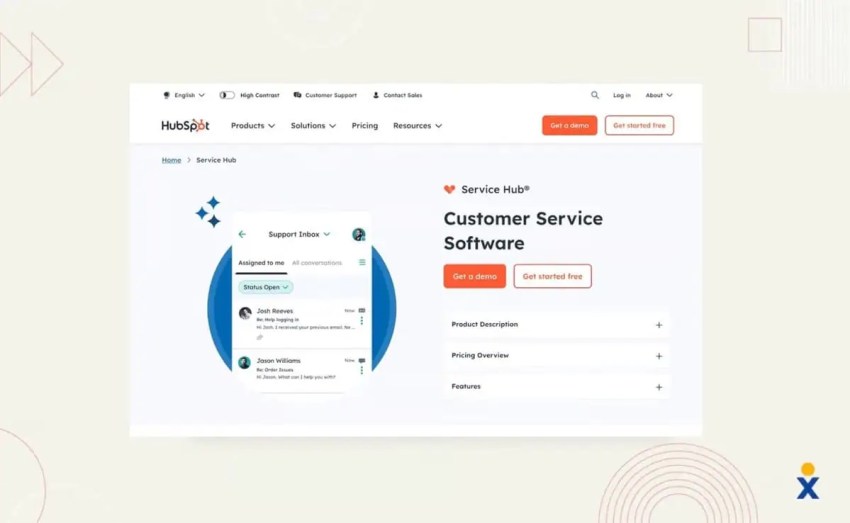
HubSpot is an all-in-one growth platform built around a central CRM with dedicated hubs for marketing, sales, customer service, and content management.
Key HubSpot features:
- Free CRM: Serves as the platform’s central repository for all customer data.
- Service Hub: A suite of tools, including a shared team inbox, ticket automation, and a knowledge base builder, for managing customer support.
- Marketing automation: Helps create automated email workflows, lead scoring, and personalized content delivery based on customer behavior.
- Live chat and chatbots: Tools for real-time interaction with website visitors and automating responses to frequently asked questions.
Pricing: HubSpot operates on a freemium model. It’s free CRM is very popular, with paid plans available for each Hub. Pricing is tiered and scales based on features and the number of contacts.
Pros: The integrated platform offers a unified customer view, a user-friendly interface, and the free tools add value.
Cons: Paid plans can be expensive, especially at higher tiers, and the sheer number of features can overwhelm new users.
Best for: Businesses that need an integrated, all-in-one platform for managing the customer lifecycle, especially those focused on inbound marketing and sales.
3. Zendesk
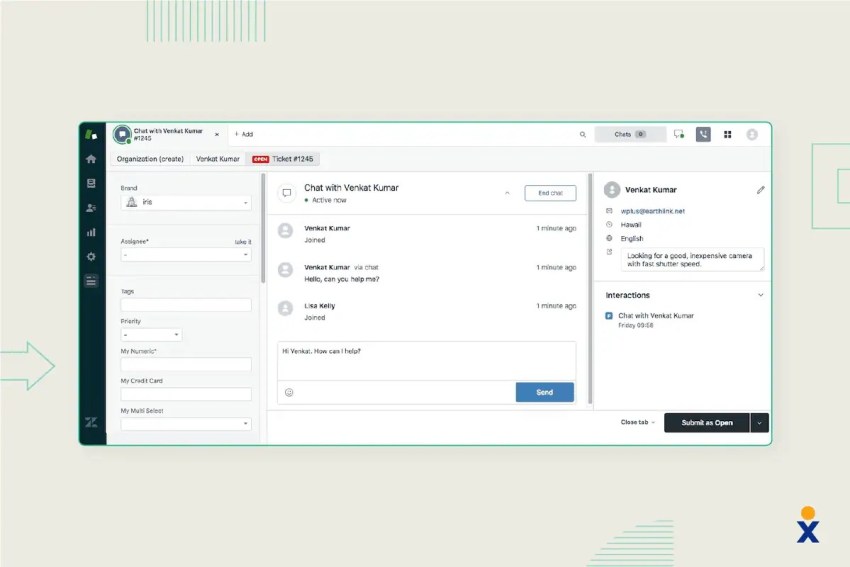
Zendesk is a dedicated customer service platform helping businesses manage support interactions, improve agent performance, and deliver a better customer support experience.
Key Zendesk features:
- Advanced ticketing system: A highly customizable system for tracking, prioritizing, and automating the resolution of customer support requests.
- Help center and community forums: Self-service knowledge base and peer-to-peer forums assist customers and reduce ticket volume.
- AI-powered bots: Answer frequently asked questions, capture initial customer information, and escalate issues to live agents when needed.
- Integrated messaging and voice capabilities: Manage conversations from web chat, social media, and phone calls in a unified workspace.
Pricing: Zendesk offers tiered plans (such as Suite Team starting at $55), billed per agent per month, allowing for scaling from small teams to large enterprises.
Pros: A great ticketing system with a strong focus on the support agent experience and high scalability for growing teams.
Cons: Focuses primarily on after-sales support rather than the customer lifecycle, and can be more expensive than some competing all-in-one solutions.
Best for: Businesses for which customer support is a business-critical function and requires a powerful, dedicated, and reliable tool.
4. SurveyMonkey
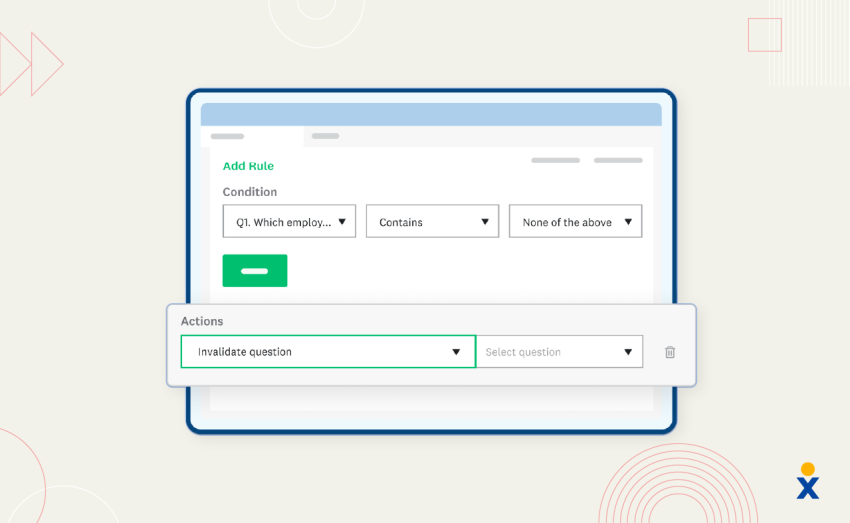
SurveyMonkey is a leading online survey and feedback platform that makes it easy to capture and analyze opinions from customers, employees, and the market.
Key SurveyMonkey features:
- Survey templates and question bank: Offers a large library of expert-designed templates and certified questions to build effective surveys quickly.
- Advanced logic and branching: Creates a dynamic survey experience where questions change based on a respondent’s previous answers.
- Text and sentiment analysis: Uses AI to automatically analyze open-ended text responses to identify key themes and gauge customer emotion.
- Broad integration capabilities: Connects with popular business tools like Salesforce and HubSpot to automate survey triggers and data syncing.
Pricing: Offers a basic free plan with limitations. Paid plans are tiered and billed annually, unlocking more features, question types, and a higher number of responses per month.
Pros: Easy to use and deploy surveys quickly, powerful analytics that are accessible to non-experts, and a wide variety of templates for common use cases like NPS and CSAT.
Cons: The free plan is quite limited for business use, and advanced features can be expensive for individual users or very small teams.
Best for: Any business that wants to make data-driven decisions based on direct feedback and needs a user-friendly yet powerful tool.
5. Shopify

Shopify is an e-commerce platform that provides businesses with tools to build, manage, and grow their online store.
Key Shopify features:
- Intuitive online store builder: Easily create and manage a professional online store with a drag-and-drop editor and customizable designs.
- Shopify app store: Get access to thousands of third-party apps for advanced features such as customer support, marketing, loyalty programs, and more.
- Abandoned cart recovery: An automated tool that contacts customers who have abandoned items in their cart via follow-up email, helping them recover lost sales.
- Customer segmentation: Built-in tools for grouping customers based on their location, purchase history, and other data for targeted marketing campaigns.
Pricing: Shopify offers a monthly subscription model with different tiers (Basic, Shopify, and Advanced) with varying transaction fees and feature sets. Shopify Plus is also available for Enterprise customers.
Pros: User-friendly and quick to set up, highly scalable from small businesses to large enterprises, and the App Store allows for almost unlimited customization of the customer experience.
Cons: Transaction fees apply to all plans unless you use Shopify Payments. Using multiple paid apps can quickly add up.
Best for: Entrepreneurs and businesses that want to sell products online and need a reliable, scalable, and user-friendly platform.
Benefits of Using Customer Experience Software
With customer experience software, your teams can serve customers faster and with more accuracy. Every interaction is supported by the right context, which strengthens relationships and drives better results. Here are the benefits you get from using customer experience software:
Increase customer satisfaction and loyalty
When a customer reaches your support team, the agent can instantly see their full history; not just their name, but details like a late delivery reported last month and a preference for email updates over phone calls. With all records stored in one place, the agent can continue the conversation without asking the customer to repeat information and address each customer’s needs personally. These small handoffs prevent frustration and show customers they’re remembered and valued, which builds loyalty.
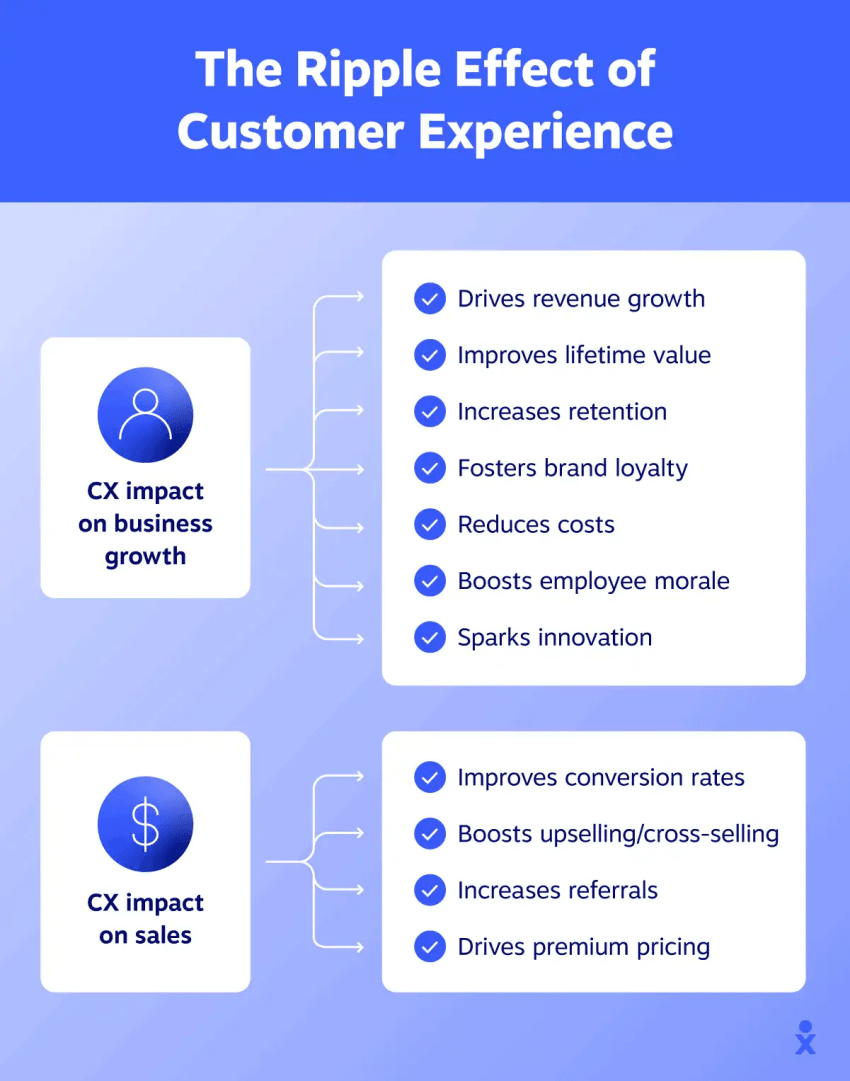
Make agents more efficient and productive
Switching between five different tools is no fun; it only wastes time and disrupts concentration. Unified customer experience tools consolidate all information, so instead of searching for an order number in one system and a complaint in another, everything is in one place.
Agents can complete tasks faster, and on the other hand, automation can handle repetitive work, so your team can focus on problems that require human judgment. And when updates happen in real time, other team members can pick up a case without starting from scratch. That alone saves a lot of time and reduces confusion.

Make smarter, data-backed decisions
Businesses only make better decisions when they have accurate and up-to-date data. CX software collects information and turns it into actionable insights. By analyzing customer behavior and trends, your team can see patterns, such as customers who contact support twice in a month being more likely to cancel or a spike in weekend chats following a product update. These patterns let you step in early, fix what’s wrong, and avoid bigger issues later. With time, those small course corrections add up to big wins.
Offer a consistent omnichannel experience
Customers often switch channels, chat on Monday, have a phone call midweek, a DM on Friday, and if those conversations aren’t connected, the service continuity is lost. Customer experience software consolidates every interaction so agents have the full context, no matter where the last message came from.
This means a conversation can continue smoothly across phone, email, chat, or social media, with the same service quality and unified brand voice. Instead of starting with “How can I help you?” an agent can say, “Hi Sarah, I saw you spoke with Mark earlier about your shipment. Omnichannel customer experiences build familiarity and trust.

Generate more qualified leads and revenue
Satisfied customers come back, spend more, and refer others. Customer experience software highlights the right moments to offer an upgrade, suggest a related product, or thank someone for their loyalty. By retaining more customers, you reduce acquisition costs while increasing revenue. Positive experiences lead to repeat purchases and long-term relationships, and over time, that loyalty compounds into sustainable business growth.
When Should You Choose a Customer Experience Platform?
Invest in a customer experience platform if you’re facing one or more of the following scenarios:
- You have a high volume of customer inquiries: If your team can barely keep up with the calls, emails, and messages, a contact center platform can help you handle the volume efficiently.
- You need to create personalized marketing campaigns: A marketing automation platform is essential for segmenting your audience and delivering tailored messages at scale.
- You have complex customer journeys: If your customers interact with you across many different channels, you need an omnichannel platform to create a consistent and seamless experience.
- You’re struggling with customer churn: Through better support and proactive engagement, customer experience software can improve customer retention rates.
- You need a single source of customer data: If your customer information is scattered across different systems, a CRM or customer experience platform can unify it.
How to Choose the Right Customer Experience Platform
Businesses assume that choosing the right customer experience platform is the one with the most features. However, what matters is how well it meets your needs. The right choice should solve your current challenges while offering the flexibility to support your future growth.
Understand and define your needs
Begin with the basics: pinpoint the challenges you want to solve. Look at where customers get frustrated, whether that’s long wait times, inconsistent service, or limited feedback channels. Write these pain points down, then rank them by how much they affect your business and your customers. This clear order of priority guides you when choosing features, so you avoid paying for extras you won’t use.
Consider your existing tech stack
Your new platform won’t exist in isolation, so start by reviewing the tools you already use, such as CRM, helpdesk, marketing automation, and other core systems in your daily workflow. Choose software that integrates smoothly to prevent duplicate work and scattered data. When speaking with vendors, go beyond asking if an integration exists; find out how it works, whether it’s built-in or requires additional setup, and if it’s plug-and-play or needs custom configuration.
Think about scalability and flexibility
You might have a set number of customers, users, or channels today, but that can change quickly. Choose a platform that can handle your current workload and scale as you grow, whether that means adding more users, activating new features, or connecting extra channels without rebuilding your setup. Flexible pricing is important too, so you can expand when needed without switching to an expensive tier before you’re ready.
Check security and compliance features
Customer data is non-negotiable, so choose a provider with strong security measures and compliance with relevant regulations like GDPR or HIPAA. Ask for proof of encryption standards, review audit reports, and check for certifications. These steps aren’t optional; they protect your customers, safeguard your reputation, reduce risk, and build trust.

Priortize customer support and training
Make sure your team has the help they need to get the most from the software. Choose a provider that offers responsive support, clear onboarding, and training resources you can revisit whenever needed. The faster your team adopts the system, the sooner you’ll see benefits and a return on your investment.
Why Choose Nextiva’s Customer Experience Software
The right customer experience platform establishes the perception of your brand. Every smooth interaction strengthens loyalty, and every poor one carries the risk of customer churn and lost revenue. That’s why the right software is your competitive advantage rather than a simple tool.
Nextiva brings all of this together in one solution. Omnichannel capabilities allow customers to switch between phone, email, chat, and social media without having to start over. All your tools, including CRM, helpdesk, and more, connect through an extensive integration library, giving your team one unified view of each customer. For call-heavy teams, advanced calling features display relevant details instantly so agents can resolve issues quickly.
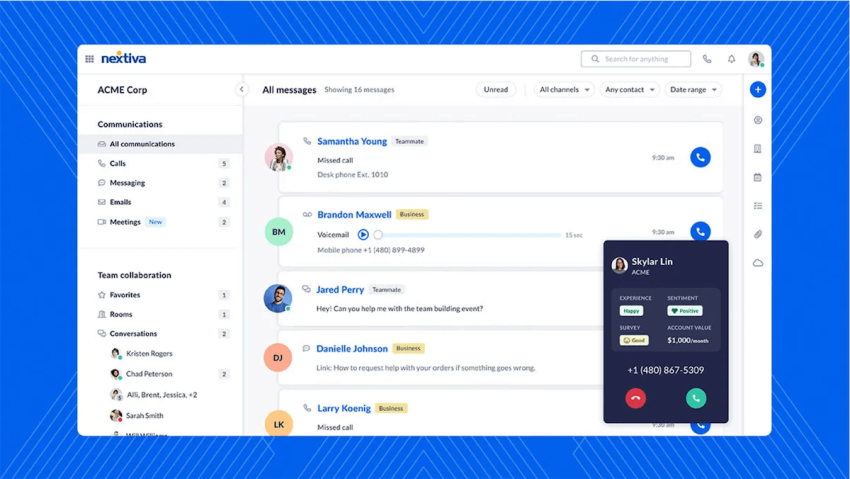
With Nextiva, businesses:
- Keep conversations flowing across channels so customers never repeat themselves.
- Improve agent productivity with all tools and data in one place.
- Personalize service at scale using unified customer data.
- Proactively improve service with predictive insights and feedback analysis.
Backed by trustworthy support and smooth onboarding, Nextiva helps you deliver better experiences, increase efficiency, and drive meaningful business results.
The customer experience platform customers love
Sales and support teams rely on Nextiva to deliver the ultimate customer experience.
Customer Experience Software FAQs
There’s no single “best” platform for every business. The right choice depends on your size, industry, budget, and needs. Popular options in 2025 include Nextiva, Zendesk, HubSpot Service Hub, Genesys Cloud CX, and Salesforce Service Cloud. When choosing one, consider user-friendliness, integration options, analytics capabilities, and scalability.
Customer experience management (CXM) focuses on managing and improving every touchpoint a customer has with your business, from marketing to support, to create positive experiences. Customer relationship management (CRM) is a tool or system for storing customer data, tracking interactions, and managing relationships. CXM is broader and strategy-driven, while CRM is more about data organization and sales or service tracking.
Most platforms use subscription pricing, starting around $15–$40 per user/month for basic features like live chat, email, and simple CRM tools. Mid-tier plans with advanced analytics, automation, and full omnichannel support typically cost $40–$75 per user/month. Enterprise-level solutions with workforce management, AI routing, and predictive insights often range from $75 to $199 per user/month. Some vendors also offer usage-based or concurrent-user pricing, and many provide free trials.
Most customer experience platforms offer APIs and pre-built integrations to connect with CRMs, marketing automation tools, help desk systems, and other business applications. These integrations keep customer data synchronized across systems, so agents always have complete context without switching between apps. Choosing software with a strong integration library and reliable API support ensures your workflows stay connected and scalable as your tech stack grows.
Businesses of every size can benefit from customer experience software. Many platforms, like Nextiva, offer flexible plans and scalable pricing that suit different budgets and requirements. Smaller teams might start with simple tools for surveys, live chat, or basic CRM features, while larger organizations can implement full contact center solutions with advanced analytics and automation. Choosing a platform that grows with your business means you can improve service from the start and expand capabilities as your needs change.

















 Customer Experience
Customer Experience 

